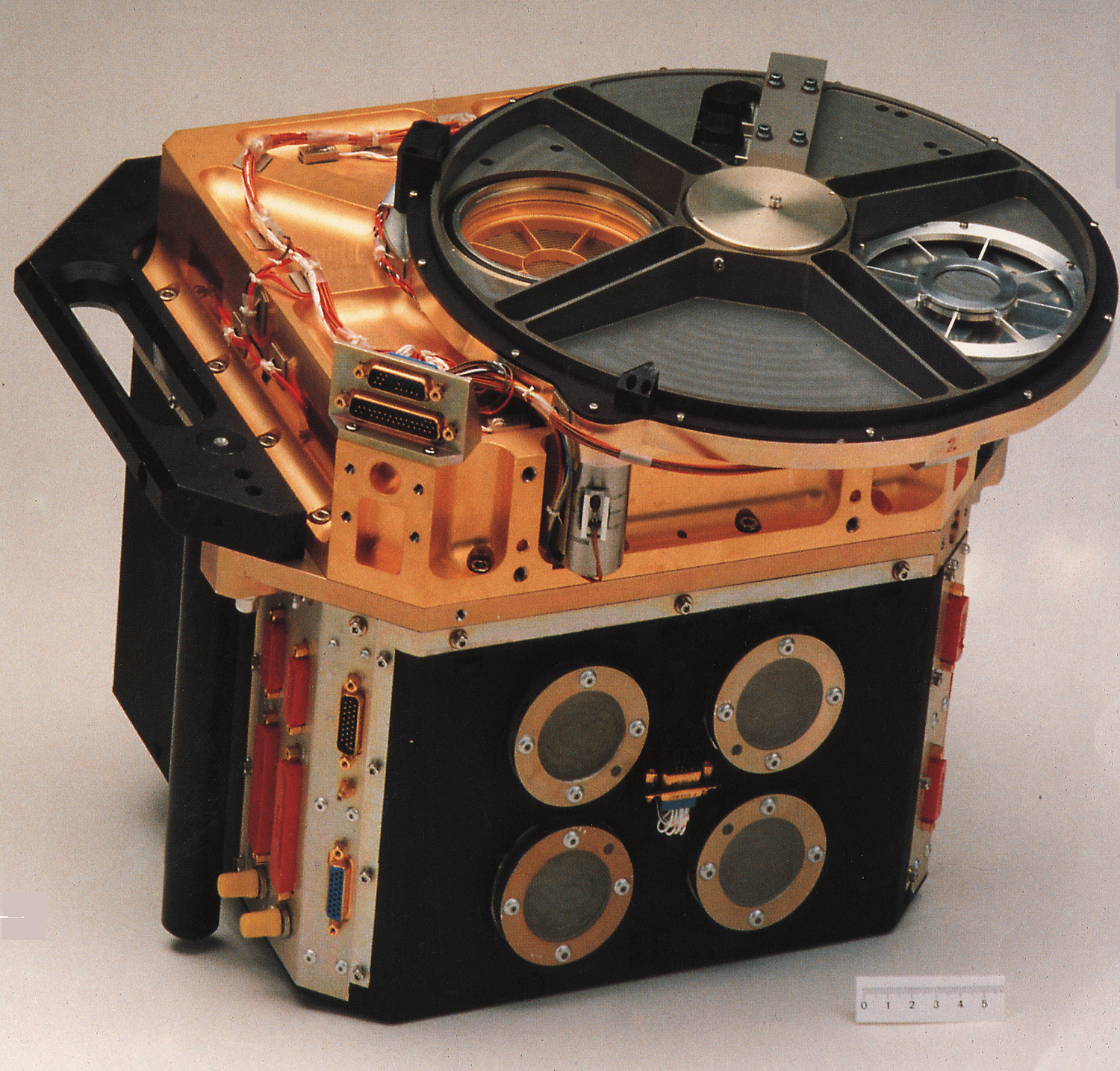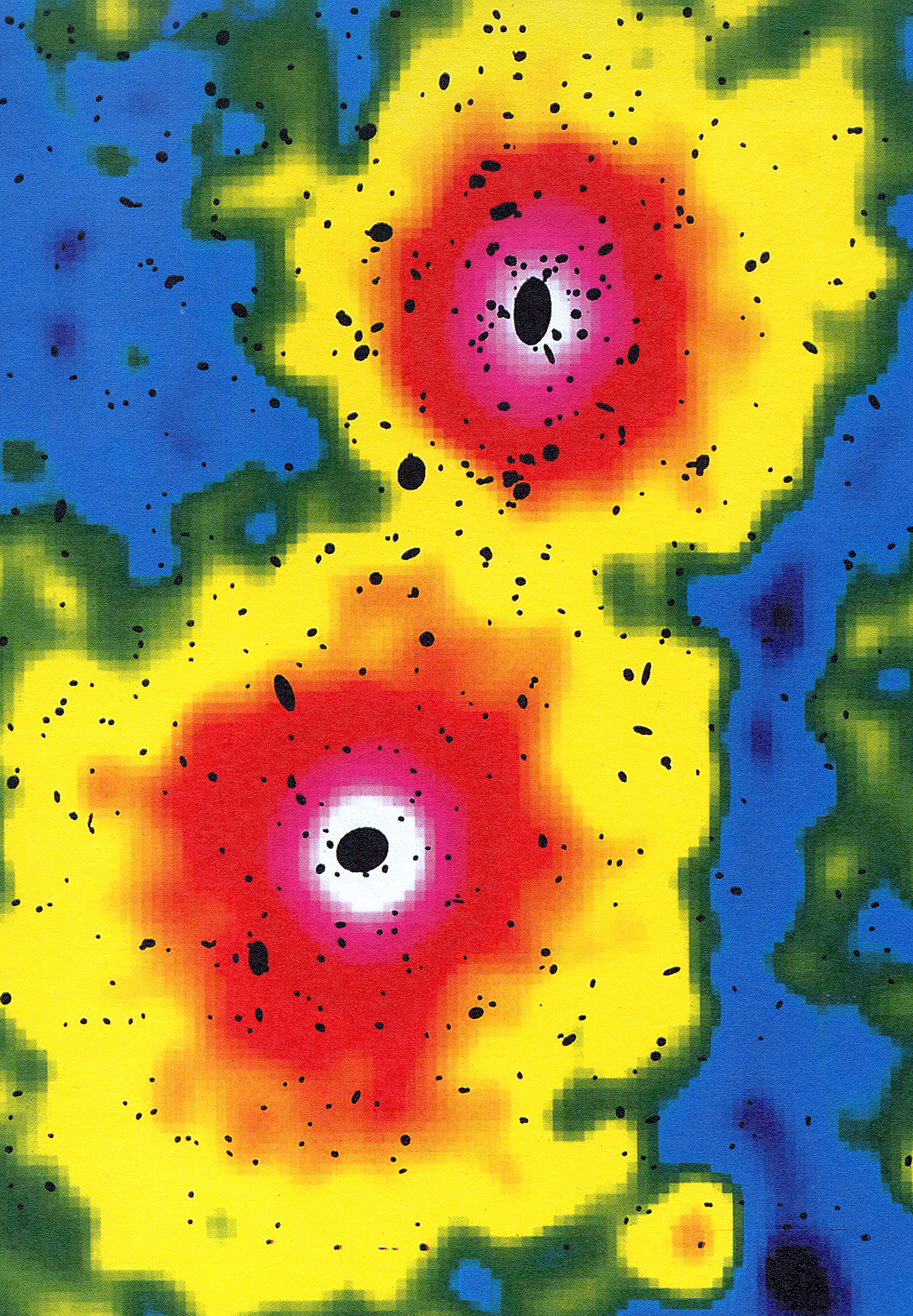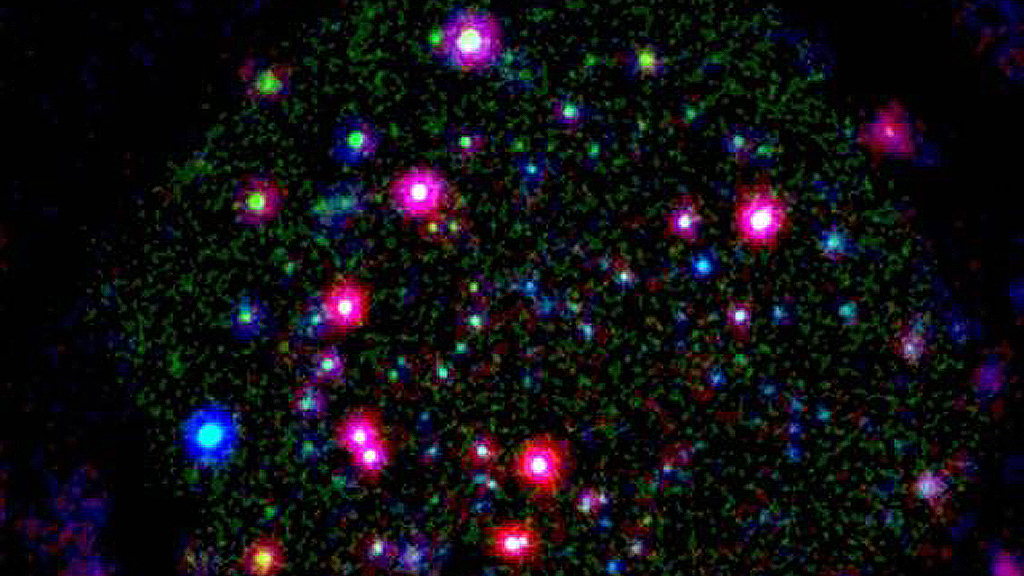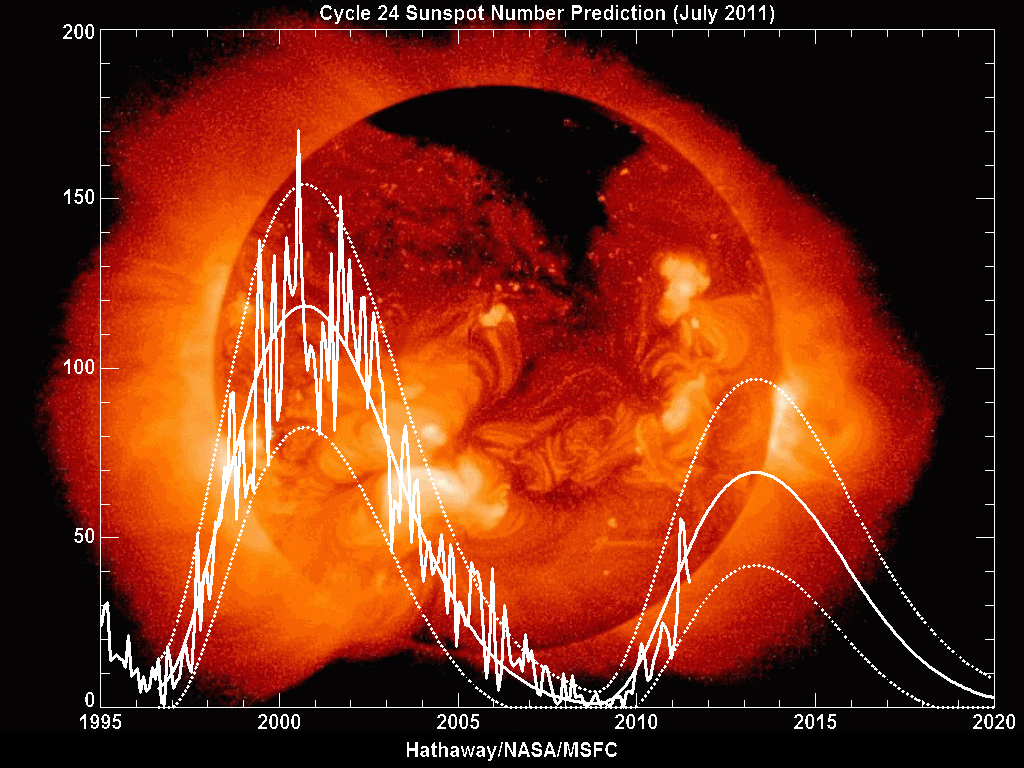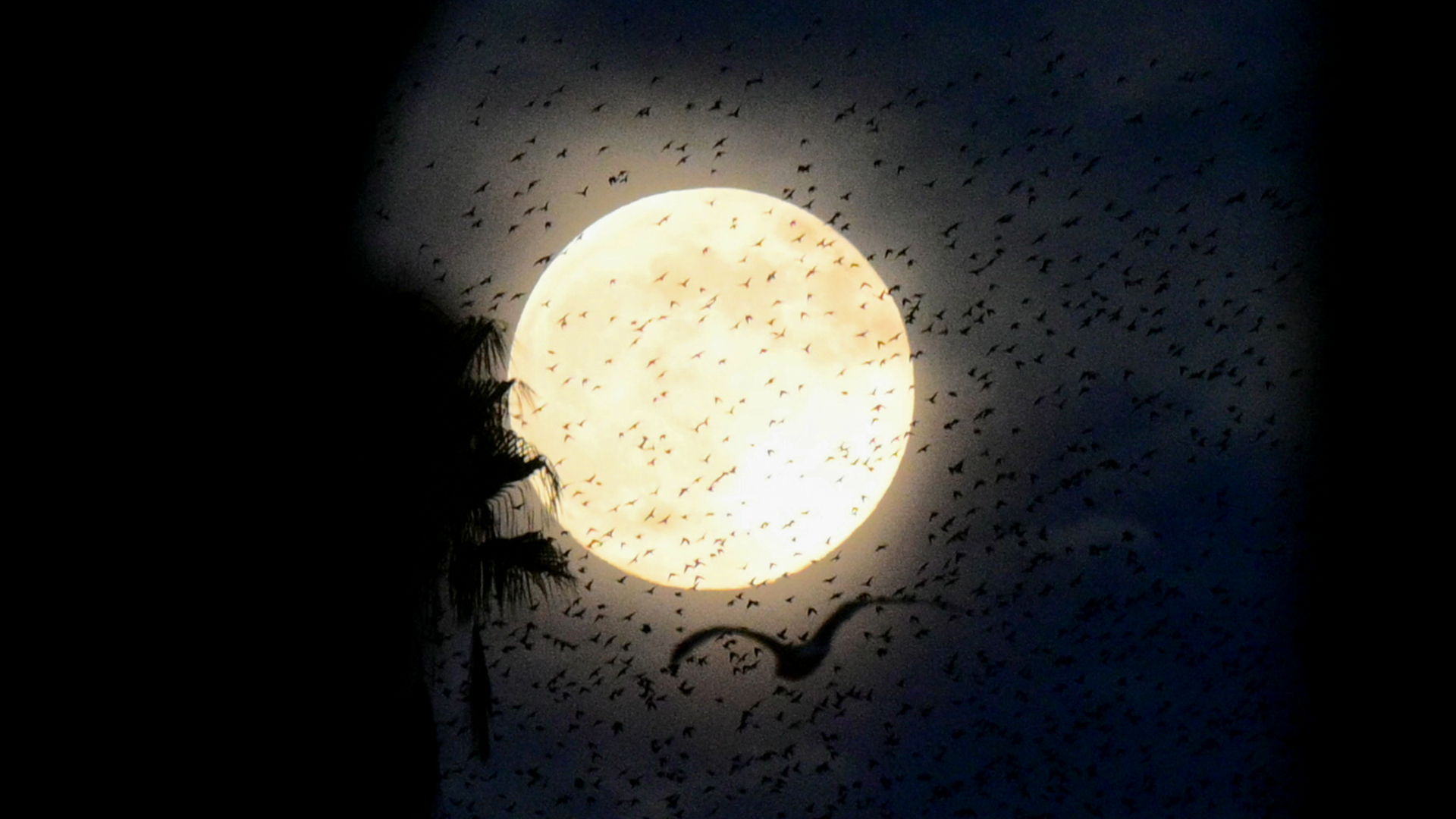Photos: Germany's ROSAT Satellite Falling to Earth
The PSPC Detector on Board ROSAT
Rosat is equipped with three detectors. Two of these are identical four-wire proportional counters known as Position Sensitive Proportional Counters detectors (PSPC), developed by the Max Planck Institute of Extraterrestrial Physics (MPE) in Garching, near Munich. The PSPC detector provides a wide field of view and a level of energy resolution that enables it to distinguish four colors.
ROSAT Image of Galaxy Cluster Abell 3528
In May 1995, ROSAT obtained this image of a galaxy cluster with a diameter of 10 million light years. This is just one of more than 200,000 ROSAT sources. The colours indicate the temperatures of the hot gas in the galactic nebula, as derived from ROSAT imaging data. In the regions at the centre of this image, the temperatures may rise to more than ten million degrees Celsius. Superimposed is an optical image (black) showing the superimposed individual galaxies.
Result From the Longest ROSAT Observation
The longest ROSAT observation of a specifically selected area of the sky lasted two weeks, and showed that more than 80 percent of cosmic X-ray background radiation is comprised of individual sources. Most of these sources are objects known as quasars, which are very energetic and distant active galactic nuclei with black holes in their centres.
Fluctuations in Solar Activity Affect ROSAT's Re-entry
This diagram shows solar activity from 1995 to 2020. The monthly average figures for the relative number of sunspots based on the frequency of sunspot occurrence are depicted. The 11-year activity cycle can be seen clearly here. The next 'maximum level' of solar activity is expected in about 2013, and is predicted to be substantially less powerful than its predecessor.
Breaking space news, the latest updates on rocket launches, skywatching events and more!

Space.com is the premier source of space exploration, innovation and astronomy news, chronicling (and celebrating) humanity's ongoing expansion across the final frontier. Originally founded in 1999, Space.com is, and always has been, the passion of writers and editors who are space fans and also trained journalists. Our current news team consists of Editor-in-Chief Tariq Malik; Editor Hanneke Weitering, Senior Space Writer Mike Wall; Senior Writer Meghan Bartels; Senior Writer Chelsea Gohd, Senior Writer Tereza Pultarova and Staff Writer Alexander Cox, focusing on e-commerce. Senior Producer Steve Spaleta oversees our space videos, with Diana Whitcroft as our Social Media Editor.
